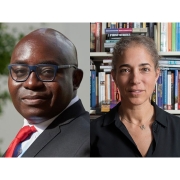New Research Turns Geological Paradigm Upside Down
Many natural processes work to pull molecules like carbon dioxide out of the atmosphere. One example is chemical weathering, which occurs when rock turns into soil. It has been long thought that mountains, because of their steep slopes and high rates of erosion, were large contributors to this "carbon draw down" effect.
However, a new study led by Assistant Professor of Earth and Environmental Science Jane Willenbring indicates this is not so.
“High mountains have been the go-to field area for people interested in studying how much sediment goes into the ocean and how tectonics perturbs global climate,” Willenbring said. “But what we found was that mountains contribute only a small amount of the total sediment produced on Earth.”
For more on this research, read the full article here.





